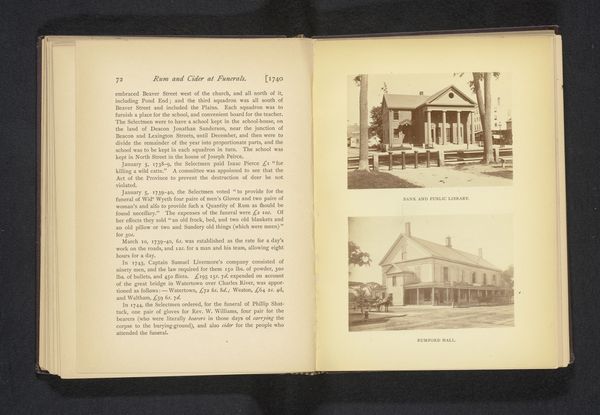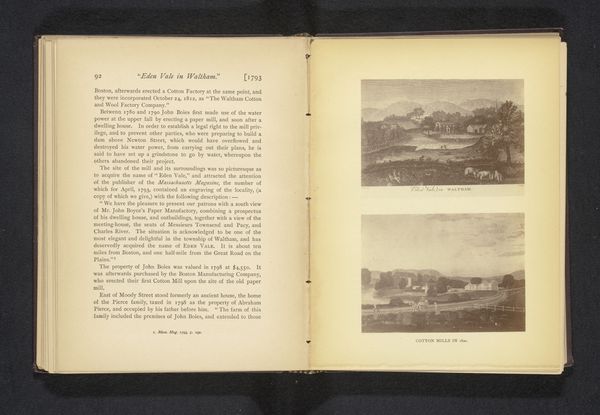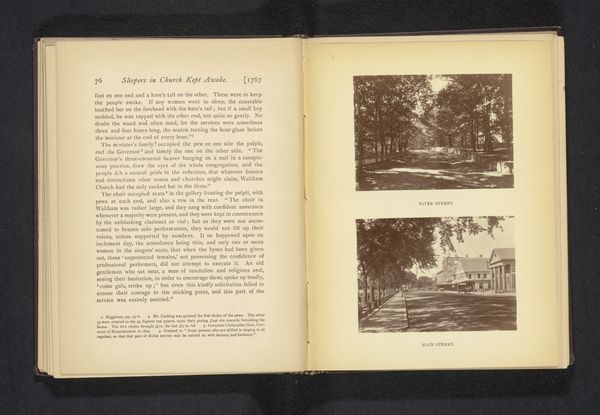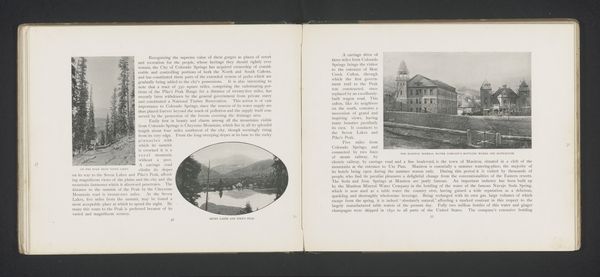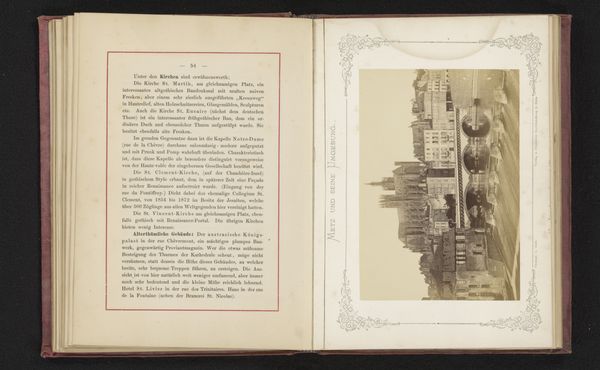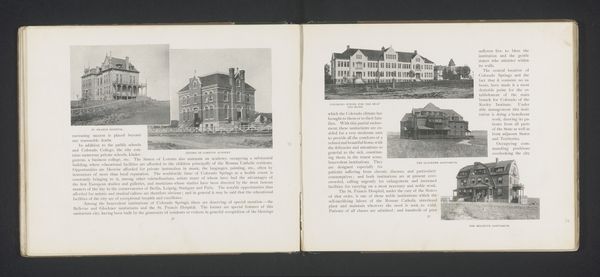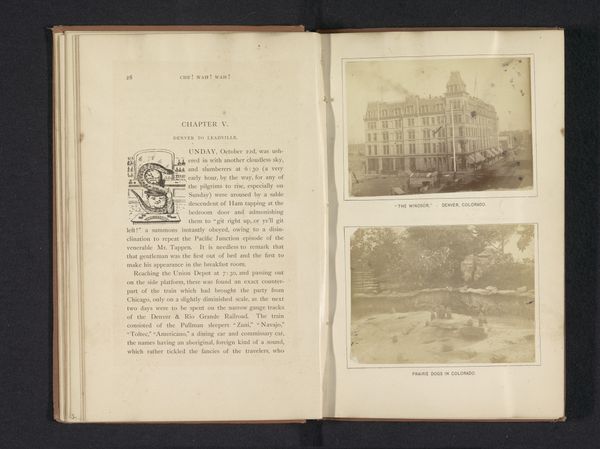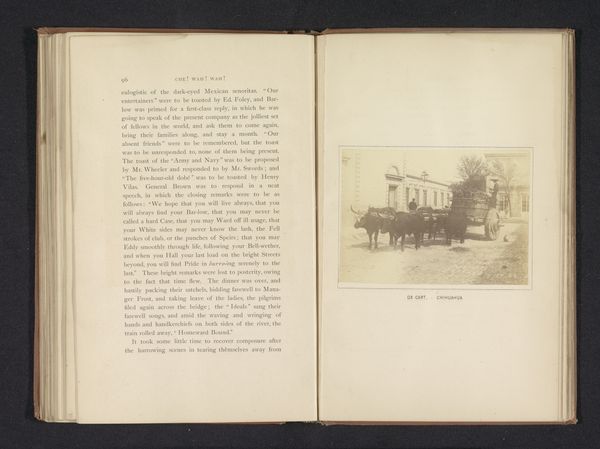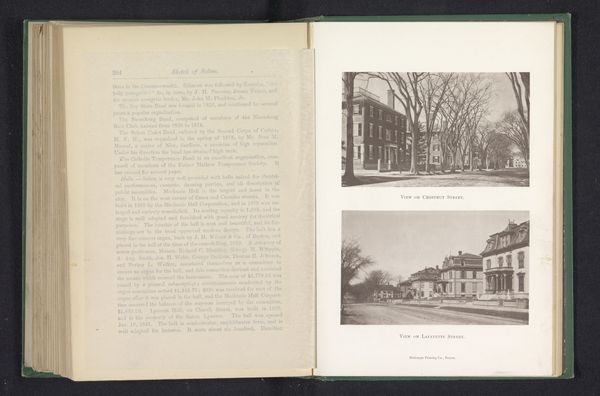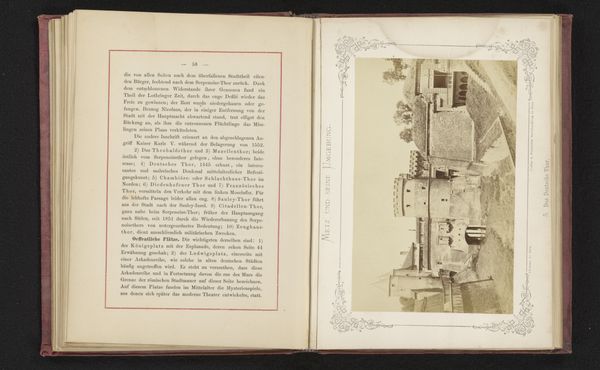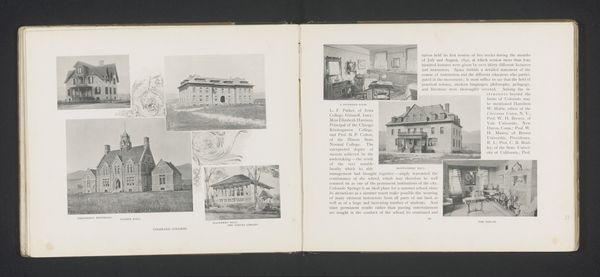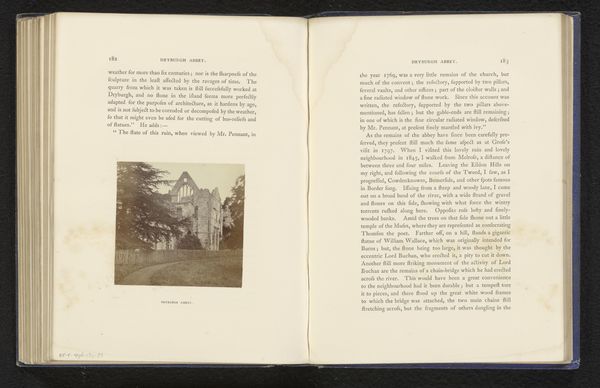
Fotoreproductie van een prent van een kerk in Waltham, Groot-Brittannië before 1879
0:00
0:00
print, engraving, architecture
#
medieval
# print
#
landscape
#
engraving
#
architecture
Dimensions: height 66 mm, width 94 mm
Copyright: Rijks Museum: Open Domain
Curator: Let’s consider this “Fotoreproductie van een prent van een kerk in Waltham, Groot-Brittannië," that is, a photomechanical reproduction of a print of a church in Waltham, Great Britain, by Thomas R. Lewis, before 1879. The work presents a visual record, doesn't it? Editor: My first thought goes straight to its raw, documentary feel. You sense the layering of hands – from the original draughtsman to the engraver, and finally the photographer creating the reproduction. It all points back to the laborious processes. Curator: Indeed. The engraving style suggests a fidelity to architectural detail characteristic of its era. Observe the use of line, creating light and shadow, defining form with near mathematical precision, evoking, even with only the printed surface, a medieval sensibility through visual structure. Editor: What strikes me is that these buildings weren't just beautiful monuments, but workplaces, filled with labourers extracting stone, constructing walls, fashioning every detail you mentioned. The pre-1879 date puts this at the start of major industrial changes that radically changed the way buildings are made and materials used. Curator: An interesting point. Semiotically, the architectural landscape evokes established religion and governance – structural stability reinforced by pictorial stability. Do you not find an expression of the sublime, a dialogue between nature and man-made design? Editor: Sublimity is, perhaps, less overt than how this photograph frames the relationship to labor and place, where that kind of structure is made possible. We're distanced now but it still reminds you how Waltham Church functioned within its immediate environment. Curator: I see what you are after. Focusing on the socio-economic reality underpinning Lewis’s print transforms it, not solely into a picture, but into a product marked by process and labor conditions, giving agency to hands and lived experience within those constructed environments. Editor: Exactly. Rather than only analyzing composition and style, it’s equally compelling to think about the conditions of the maker and what this reproduction allows us to visualize, or even recover, materially. It makes one wonder how a single church, presented as a visual form, stands for something far more elaborate. Curator: Food for thought. Editor: Absolutely.
Comments
No comments
Be the first to comment and join the conversation on the ultimate creative platform.
